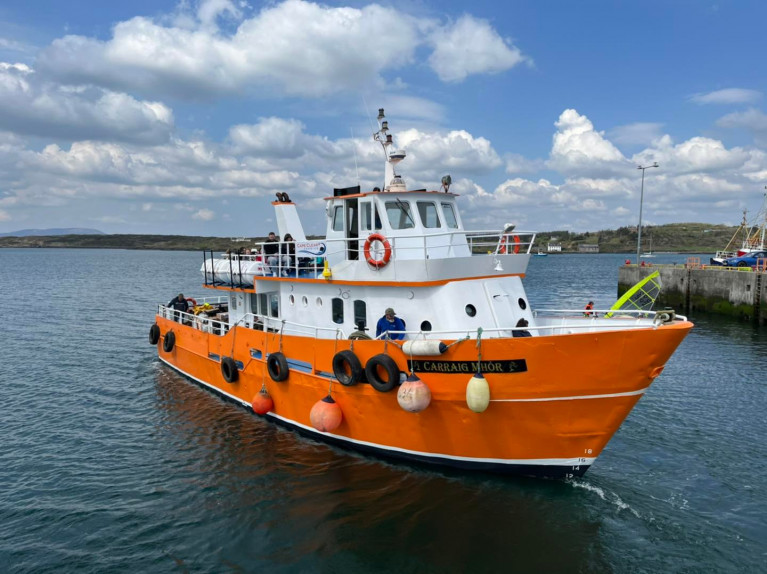Displaying items by tag: Island tourism
New Wild Atlantic Way Ferry Sets Sail for Cape Clear Island
A ferry acquired by Cape Clear Ferries set off on its maiden crossing to the West Cork island yesterday and under the new name of Carraig Mhór, writes Jehan Ashmore.
The Baltimore based operator's latest addition saw Carraig Mhór which has lounges and outdoor viewing decks, enter service on the 2pm sailing from the harbour pier.
In addition to the Baltimore-Cape Clear Island route, the operator also serves the island from Schull, further to the west on the Mizen Peninsula.
The 96 passenger ferry previously named the Happy Hooker, had served a long career serving the Aran Islands for Doolin2Aran Ferries, having been built in 1989.
Afloat researched that the Happy Hooker had departed Rossaveel, Connemara in January and this led to a delivery voyage along the western seaboard to the ferry's new Cork coast homeport.
In order to prepare the 19.8m ferry for Cape Clear Ferries, this involved months of work carried out by their crew and by Oldcourt Boats Ltd located on the nearby River Ilen. Gone has the blue hull colour of the Doolin-based operator, as the distinctive twin funnelled Carraig Mhór emerged also with a stricking orange hull and white superstructure reflecting the ferry's new owner.
The same livery scheme is sported by Cailín Óir, a 100 passenger excursion vessel that had also been a Cape Clear ferry is run by the company's Cork Harbour Cruises which launched in 2021. Such cruises resumed this season having started during the busy Easter Bank Holiday weekend.
Returning to Carraig Mhór, which has joined another company fleetmate, the 94 passenger ferry Dún an Óir II that serves the island which is three and a half miles long by one and a half miles wide. The ferries offer the opportunity to do whale and dolphins spotting off the island's rugged coastline.
Afloat tracked the ferry's route passage which offers the added bonus of passing Sherkin Island to reach the Cape Clear where the island is rich in archaeology history with ancient standing stones, Bronze Age monuments and traditional stone walls.
Cape Clear (Oileán Chléire) has a permanent Irish speaking population of 130. During the summer this number increases significantly, noting there is an Irish Language Summer School.
Also the summer brings a lively social and traditional music scene with local joined by visitors.
Facilities on the West Cork island include restaurants and pubs, a range of accommodation including a youth hostel, yurt village, campsite, various guesthouses and a choice of holiday homes.
A Baltimore-Cape Clear Cruise is also available plus further offshore, is an excursion cruise around the Fastnet Rock Lighthouse (“Teardrop of Ireland”) which is also available from Schull.
These tours are based as the following: Fastnet Day Tour, Sunset/Twilight Tours and Direct Fastnet tours and subject to weather conditions.
Asides tourism, the company is a vital lifeline for islanders bringing cargoes but only operates out of Baltimore.
























































